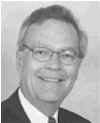|

|
|
Branded
Restrooms:
What's
Next for Virginia's Rest Stops?
The
actress Susan Sarandon, while accepting an award in
New Jersey, once quipped that she would actually
like her name on one of the state’s rest areas.
Anyone who has traveled the infamous New Jersey
Turnpike knows this is not an idle request. The
Garden State’s finest are memorialized in the
names of its rest areas – Vince Lombardi, Thomas
Edison, Walt Whitman, Clara Barton, etc.
Here
in Virginia, state officials have adopted a more
familiar convention for our 41
rest areas and 10 welcome centers. The oases,
named for local towns and landmarks, are spread
along the Commonwealth’s six interstate highways.
While traveling through Virginia you’ll find the
Carson Rest Area on Interstate 95 in Prince George
County, the Troutville
Rest Area on Interstate 81 in Botetourt County,
or Jerry's
Run Rest Area/Welcome Center on Interstate 64 in
Alleghany County.
According
to recent statistics gathered by the Travel Industry
Association, road travelers make more than 28
million trips to or through Virginia annually. Those
who sampled the Commonwealth’s public rest areas
found standard amenities – restrooms, pet exercise
areas, vending machines, tourist information,
telephones and picnic areas. They could visit any
day of the week, any hour of the day, and park for
up to two hours. At each location there’s a
24-hour private security guard on duty, a spot for
state trooper parking, hourly patrols, and
surveillance cameras help ensure safety.
Rest
areas in the U.S. originated in 1938 as part of the
Federal-Aid Highway Act. The legislation stated,
“the States, with the aid of Federal funds, may
include … such sanitary and other facilities as
may be deemed necessary to provide for the suitable
accommodations of the public.” But it wasn’t
until the Interstate Highway Act of 1956, and later
the Highway Beautification Act of 1965 – a pet
project of Lady Bird Johnson – that rest areas
became commonplace.
Such
oases are now such a part of the American landscape
that they have spawned studies and conferences such
as “Investigating the Needs and Expectations of
Rest Area Users: A Critical Step in Long-Range Rest
Area Planning,” (ITE Journal, July 2002)
and a 1999 Rest Area Forum in Atlanta, GA, sponsored
by the U.S. Department of Transportation. One author
penned a popular 2001 guidebook, "Rest
Areas and Welcome Centers Along U.S. Interstates,"
(which also lists Cracker Barrel locations, as well
as discount stores such as Wal-Mart, Sam’s Club,
K-Mart and Target).
About
15 years ago, Virginia even studied the possibility
of privatizing its rest areas and welcome centers in
the hopes the feds would lift a ban on commercial
establishments on interstates (“Final Report:
Opportunities for Privatization of Virginia’s Rest
Areas and Welcome Centers,” Virginia
Transportation Research Council, 1991). Originally
designed to protect small town businesses along
interstates, the law still stands. Groups such as
the National Association of Truck Stop Owners argue
that lifting the ban would shift tax revenue from
localities to the state, and competition from public
rest areas might result in the closing of private
truck stops, which provide 90 percent of the parking
for truckers. This in turn might raise safety issues
such as forcing truckers to drive while drowsy, the
organization argues.
Still,
the demand for rest areas continues. Since 1991,
Virginia has added 13. While some argue that rest
area maintenance costs do not offer enough return on
investment, the Virginia Hospitality and Travel
Association sees them as a marketing opportunity.
Last year, in cooperation with the Virginia
Department of Transportation and the Virginia
Tourism Corporation, VHTA distributed 850,000 local
business brochures as part of its new Rest Area
Distribution Program along I-81, I-95 and I-64. This
year the association is recommending businesses
provide 50,000 brochures for the I-81 and I-95
corridor rest areas and 30,000 for I-64.
If
the federal ban on interstate commercialization is
ever lifted, Virginia could borrow some ideas from
other states. In Texas, the state department of
transportation is accepting bids to offer free
wireless Internet access at its 84 rest areas and 12
information centers (“Texas Rest Stops Set to
Offer Wireless Access,” Trailer Life 65,
February 2005.)
In
Schiller Park, Illinois, a new toll road oasis
offers the only Starbucks in town, attracting
visitors on foot and bicycle (“Upgraded Illinois
Toll Road Rest Stops Draw Attention From Nearby
Towns,” Chicago Tribune, August 6, 2004).
The
Florida Turnpike District enthusiastically branded
its restrooms back in 2000, posting signs that Lysol
was the cleaner of choice. The disinfectant’s
parent company picked up the marketing tab (“Rest
Stops: Hotbeds of Antibacterial Activity? Brandweek,
September 25, 2000).
After
all, a 2002 study found that 51 percent of those who
stopped at rest areas did so to “use the
toilet/change a diaper.” “Stretching and
walking,” “disposing of trash,” and “using
the drinking fountain,” came in next. The
marketing opportunities are endless.
NEXT:
Finding One’s Way: Signs of Virginia
--
February 27, 2006
|
|
